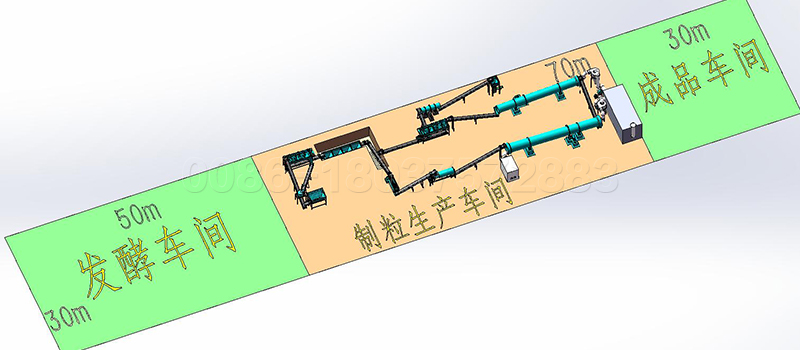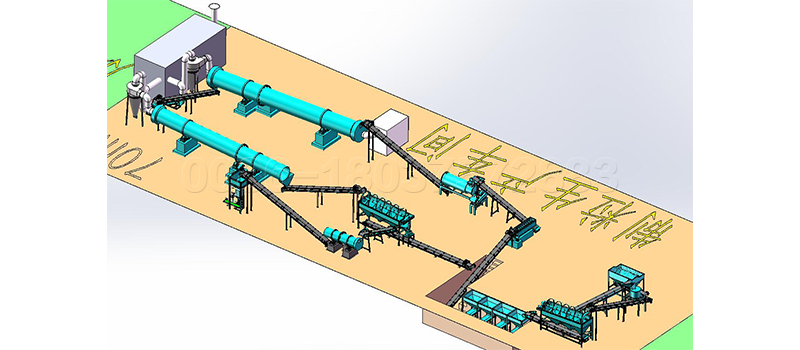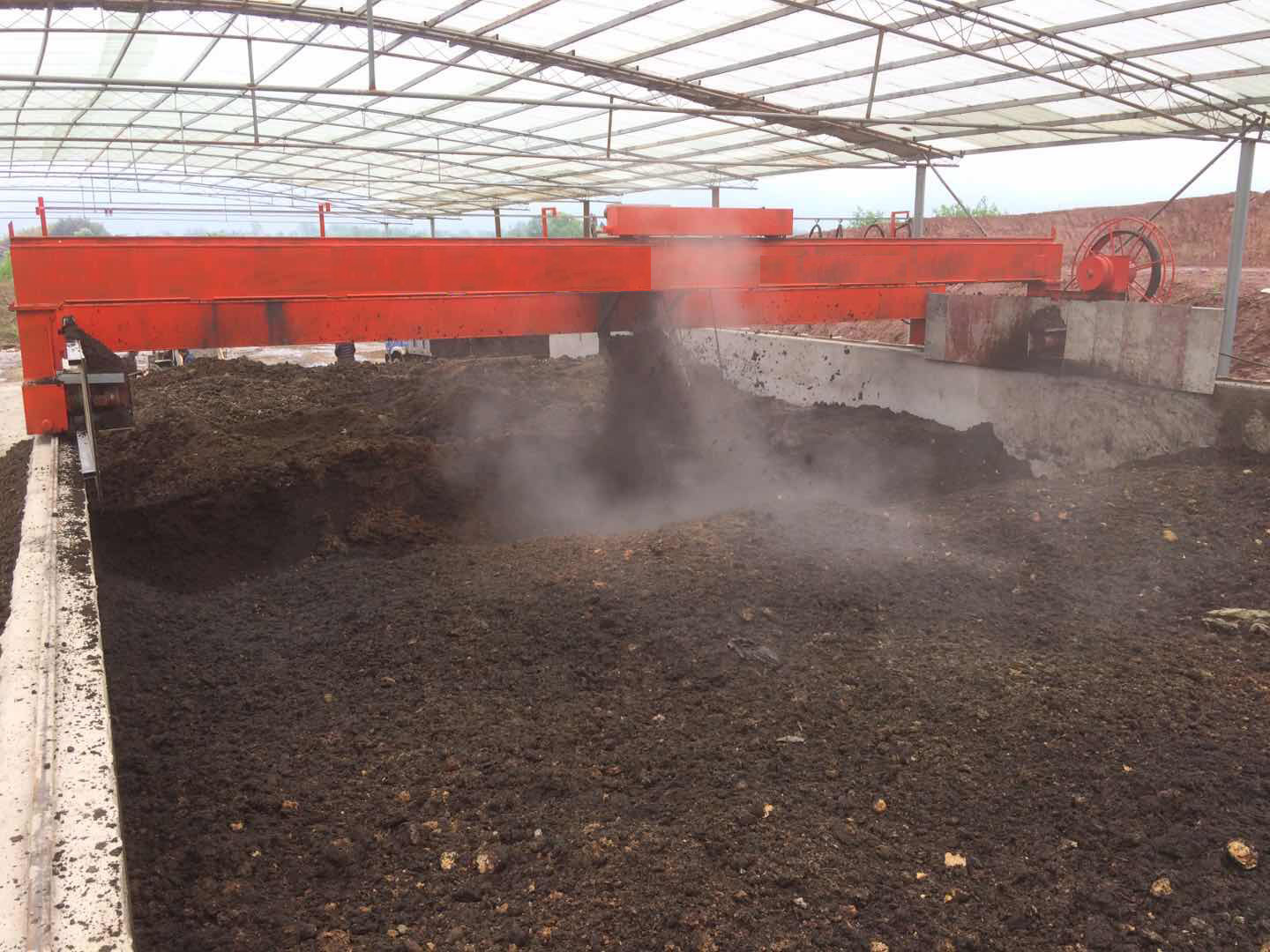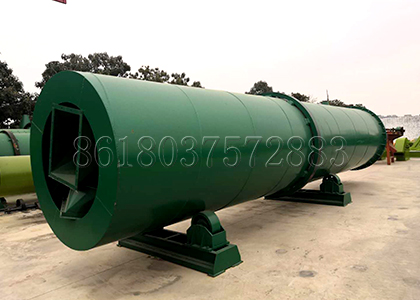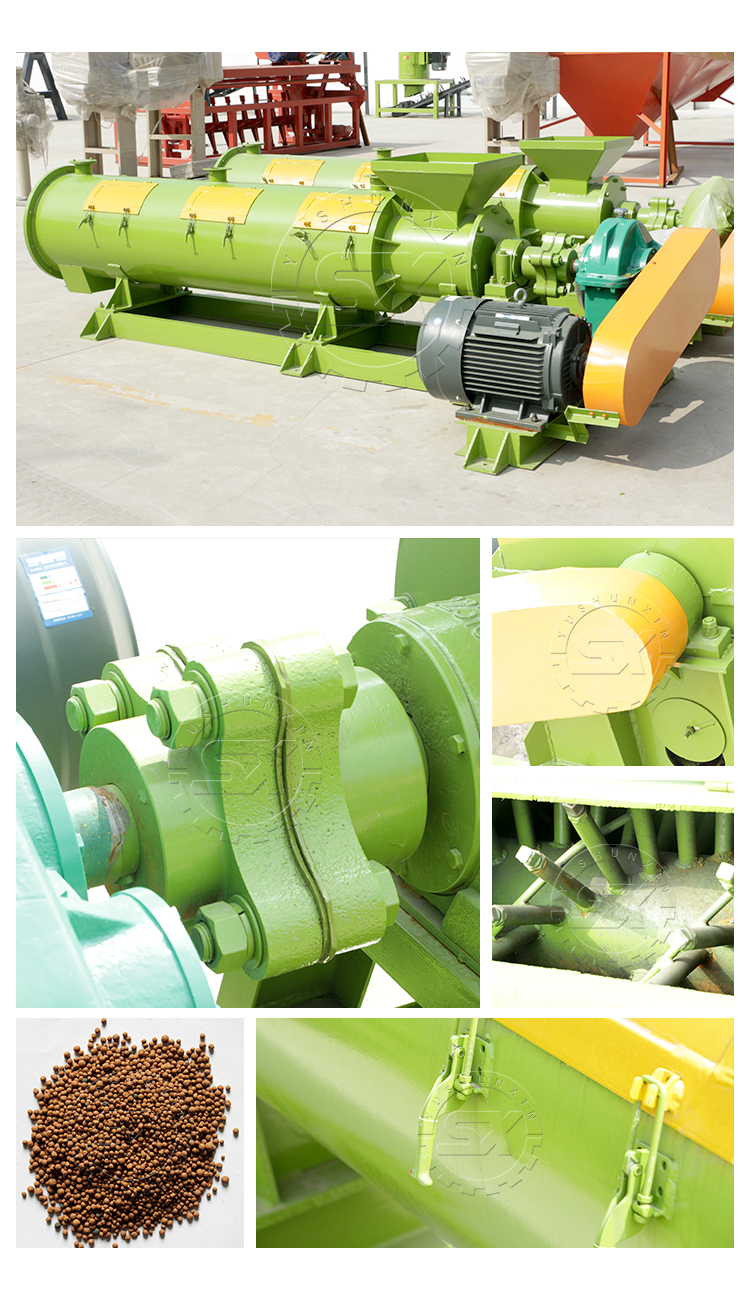In the process of organic fertilizer production, how to granulate the fermented raw materials is the key factor to determine whether the commercial fertilizer can enter the market. The following granulation methods are generally used.
Fertilizer production line
(1) Agglomerate granulation. Under the action of rotation, vibration and stirring, the wet powder in motion is agglomerated. Or the fluidized bed is used to coagulate dry powder and particles into suitable particles by supplying spray solution (adhesive).
(2) Extrusion granulation. It is a method of making dry powder or wet powder containing adhesive into cylindrical, spherical or sheet by mechanical processing such as extrusion, roll extrusion or pressing.
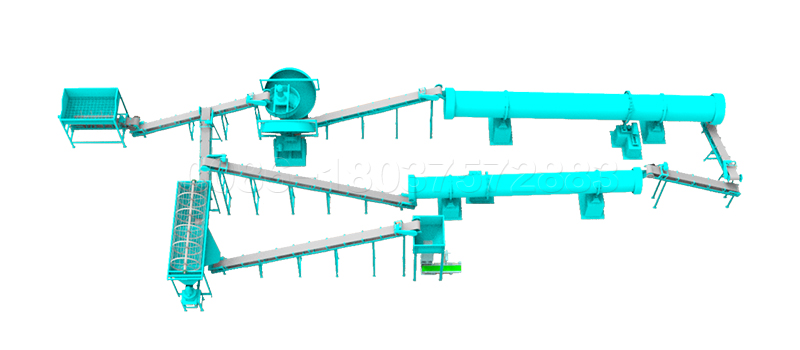
(3) Crushing and granulation. It is to crush block materials into particles of appropriate size.
(4) Melt granulation. It is a method of granulation by cooling and hardening molten liquid.
(5) spray granulation. It is a method of directly granulating solid after concentration in liquid.
(6) Liquid phase crystallization granulation. It is a method that materials crystallize in liquid phase and agglomerate into spherical particles through liquid bridging agent and stirring.
This technology is widely used in pharmaceutical industry. Because the particle shape is spherical, it is also called spherical crystallization granulation method, which is abbreviated as spherulite granulation method.
Spherulite particles are pure material particles with good fluidity, filling and compression formability. In recent years, the technology has been successfully developed. That is, polymer copolymer precipitation is added in the spherulite crystallization process to prepare sustained-release, rapid release, enteric coated, gastric coated pellets, floating hollow pellets, biodegradable microcapsules, etc. Preparation of sustained release pellets.
More detailed info on orgnaic fertilizer granulation, go to https://www.fertilizer-plants.com/granulator-machine-for-fertilizer/


